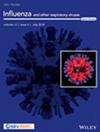Assessing the Impact of Non-Pharmaceutical Interventions During the COVID-19 Pandemic on RSV Seasonality in Europe
Abstract
Background
During the COVID-19 pandemic, atypical respiratory syncytial virus (RSV) circulation patterns emerged, with the occurrence of RSV activity outside the typical winter season. This study investigates the impact of COVID-19 and associated non-pharmaceutical interventions (NPIs) on RSV seasonality.
Methods
The onset, offset and peak of RSV epidemics from 2018 to 2022 across 12 European countries were determined using the 3% positivity threshold method. A multilevel longitudinal logit regression model for proportions assessed the associations between five NPIs (school closures, mask use, workplace measures, public gathering restrictions and closure of public spaces) and RSV, utilising RSV surveillance data, two NPI databases (ECDC-JRC and Oxford) and COVID-19 surveillance data.
Results
Before 2020, consistent RSV seasonality patterns were observed, but the seasonal increase of RSV-positive cases in winter remained absent during the COVID-19 pandemic (2020–2022). Analysis revealed inconsistent associations between individual NPIs and RSV. The associations differed depending on the data source used (ECDC-JRC or Oxford), not only in magnitude but also in the direction of the coefficients. Public gathering restrictions and closure of public spaces exhibited significant negative associations with RSV incidence. However, this was only observed when using surveillance data for the entire epidemiological year and not when only examining weeks with increased RSV activity.
Conclusions
This study highlights the need for standardised international data collection and procedures for infectious disease modelling, as varying NPI implementations, NPI registration and RSV surveillance across countries complicate the understanding of RSV dynamics during the pandemic. Caution is recommended when interpreting the effects of NPIs on RSV circulation.


 求助内容:
求助内容: 应助结果提醒方式:
应助结果提醒方式:


